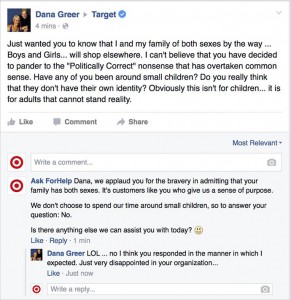— June 21, 2017

olafpictures / Pixabay
Marketers who use web push are at an advantage: they can reach out to customers with maximum relevance, and communicate with customers in real-time and during peak engagement. In fact, not using web push to improve your customers’ shopping experiences whenever you have an opportunity to do so is wasting one of the most effective resources marketers have at their disposal.
To explore the benefits of web push more closely, we created accounts with several ecommerce retailers that are known for using web push to communicate with their shoppers. Despite asking us if we wanted to opt-in to receiving web push messages, one of these brands – a company that offers online courses and certification programs for purchase – didn’t send a single message during our entire shopping journey. We browsed courses, marked items on a “wish list” to come back to later, and made a purchase without hearing anything from the brand. We were surprised that the brand didn’t use web push at all during that time, but even more surprising was when the brand finally did send a web push message advertising a new selection of courses – nearly a month after we’d stopped engaging.
The method used by the brand could be considered “at-risk web push” – which, though a great way to re-engage shoppers, cannot and should not be the sole method for delivering web push messages. While it makes sense to think about using a new channel to reach out to shoppers who have been relatively silent on the channels you’re already using, you need to have been engaging with customers and gathering behavioral data for the entire duration of their shopping journey in order for that method to actually be successful. Marketers need to be engaging, not re-engaging: whatever resources you have available to you need to be leveraged during the customer’s shopping journey when they’re actively browsing and purchasing, not when they’re showing signs of dropoff. And in the case of web push, marketers who only choose to start sending web push messages after a customer has been quiet for some time – when they’re considered “at risk” – aren’t using the channel for all it can do to foster your relationships with your customers and to guide them towards becoming loyal shoppers.
So what should marketers do when using web push?
1. Pay attention to real-time signals of activity so you can reach out at the right time
Consider this: following up with your customers within minutes of disengagement is 3x more effective than waiting 24 hours, and 7x more effective than waiting a week. Observing real-time signals of activity lets marketers reach out during peak engagement so they can more effectively influence the customer’s shopping journey.
2. Redirect customers to their abandoned cart, relevant products, flash sales, or forgotten welcome offers
Sending a web push message that offers a suggested “next step” is one of the best ways to keep shoppers on a trajectory towards repeat purchases and towards loyalty. Consider sending a web push to remind customers of forgotten merchandise and coupons, recommend relevant products, and announce flash sales.
3. Most importantly, re-engage at-risk shoppers with relevance and urgency
We’re not saying there’s anything wrong with using web push to re-engage at-risk shoppers! The key is to make sure it’s not the only reason you’re using web push, and to make sure that you’re doing so in a way that speaks to your shoppers’ unique needs. Consider using language like “We’ve missed you!”, or offering a special incentive for at-risk shoppers to start engaging again.
Using web push only to re-engage at-risk shoppers (and at no other time beforehand) is a bit like marketing procrastination – it doesn’t make sense to only reach out when you’re in danger of losing your shoppers, when you could have been engaging them more consistently and at more relevant times. Marketers need to be sending these targeted messages while customers are still engaged in your brand, not waiting until they’ve lost interest before reaching out. When you use web push throughout the entire customer journey, you can not only engage your shoppers more immediately and with increased relevance, you’ll be able to learn more about their needs and preferences along the way for an even stronger brand-user relationship.
This post originally appeared on the Zaius Blog.
Digital & Social Articles on Business 2 Community
(28)
Report Post






